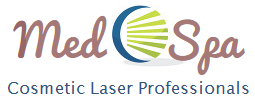PDO (Polydioxanone) threads are absorbable sutures that were initially developed for use in cardiac surgery procedures. PDO threads have received FDA clearance and are now recognized as a safe, minimally-invasive alternative to traditional aesthetic procedures such as full face, jaw, brow, and neck lifts.
A PDO thread lift is a procedure which uses Polydiaxanone threads to lift and tighten sagging skin. Once inserted into the sub dermal layer of the skin, the threads provide an instant “lift” of the surrounding skin, and stimulate endogenous collagen production to improve skin texture, fine lines and the function of elastin, the main protein constituent of elastic connective tissue in skin. PDO threads are used for two main purposes—to lift sagging skin and to add volume to tissues—and use different thread applicators and thread weights accordingly.
The primary benefit to PDO threads over traditional facelifts are reduced costs, scarring, healing time, and invasiveness.
How is it done?
A PDO thread lift using MasterThreads is a safe and minimally invasive procedure using up to four types of threads: “barbs”, “hooks”, “monos”, and “screws”. Barbs and hooks are used to lift the skin, while monos and screws are used to smooth fine lines and wrinkles, including under the eye and the nasolabial folds. These threads can also be used to plump lips and reshape the nose. Longer barbs can be used for sagging skin found around the stomach, arms, legs and buttocks.

Most facial treatments typically take between 30 minutes to an hour, and simple individual areas can take between 5 to 15 minutes. Minimal pain is usually reported from the procedure, and a local anesthetic is typically used to alleviate discomfort. Lifting is instantly observable after the treatment, although optimal results are usually seen within 2-3 weeks. Threads will dissolve within 3-6 months, depending on the type of threads used, but neocollagenesis can continue for up to 18 months after the procedure as tissue constituents grow around the lattice created by the thread. In addition to facial treatments, PDO threads are also used for body lifts, with minor differences in the type (and lengths) of the threads involved.
What are the differences in thread types?
We carry the most expansive inventory of threads available on the market, allowing greater flexibility through the use of “monos”, “screws”, “barbs”, and “hooks” of different gauges, styles, and lengths to perform lifts to address specific patient issues. For maximum lifting and volumizing, the MasterThread Lift
Procedure involves two primary techniques:
Barb Thread Lifting Technique – These threads are usually longer in length and are used to lift sagging skin to help recreate a youthful “V” shape. Each barbed thread has raised barbs along the entire length of the thread to anchor into the skin and instantly lift after placement. Barbed threads are inserted under the sub dermal layer of the skin and cause an intended inflammatory response, which promotes collagen production even after the thread dissolves. Placement of the threads uses a simple 1-2-3 procedure, trained by our resident specialists.
Monos and Screws Technique – These threads are typically smaller than the barbed threads and are used to volumize and tighten skin. They are most often inserted in a mesh pattern (vertical and horizontal) to create a scaffolding foundation for the skin to create new collagen. The initial inflammatory response is the same principle behind other aesthetic procedures such as fractional lasering, micro needling and other skin tightening procedures. Monos and screws are ideal for treating the fine lines and wrinkles under the eyes and crows feet, and can also be used along the marionette lines and can help plump lips around the vermillion border.
Are there any side effects?
PDO thread lifting procedures should always be undertaken by a qualified medical professional. When performed correctly, typical, minimal side effects may include redness, mild swelling, bruising and soreness for the first few days after the procedure, although for many, there is little to no downtime reported. In some cases, additional side effects have been reported, but these cases are considered to be rare.
Can PDO thread lifting be combined with other therapies?
Yes. PDO thread lifting is routinely used in conjunction with other skin rejuvenation procedures—including fillers, injections and resurfacing techniques—as part of patients’ physician directed anti-aging protocol. The threading procedure typically involves a brief recovery period and is used by many dermatological surgeons and other anti-aging specialists in conjunction with other minimally-invasive therapies such as Botox® and Dysport®.
Who performs PDO thread lifting procedures?
PDO Threads by MasterThreads are used by some of the top dermatological surgeons in the world for face and other midface lifts.
Why choose PDO Threads?
PDO threads by MasterThreads have a superior tensile strength to our competitors and provide a stronger lift, while using fewer threads… many of our clients who have bought other brands’ threads have found that they merely “saved a penny to spend a dollar” as a result. In addition to unmatched quality, we offer a larger selection of thread types, sizes and strengths than you will find from other sources, including our latest generation of “barb” threads, that contain more hooks per thread than similar products on the market. PDO Threads are easy to insert (using our simple 1-2-3 technique), and hold up from the time they are placed until they safely, naturally dissolve.
